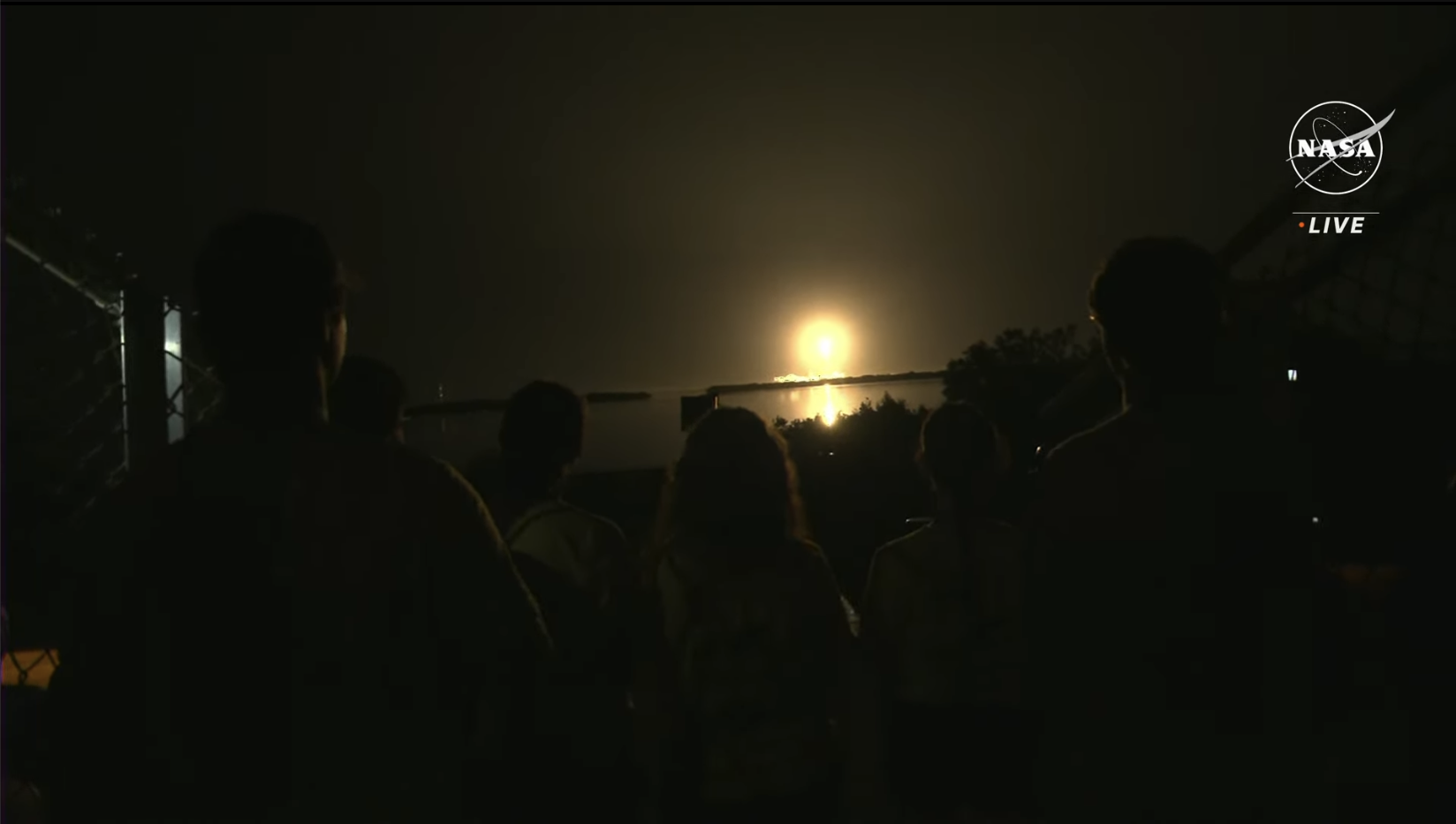
After a 24-hour delay to address safety and operational margin concerns pertaining to an Environmental Control and Life Support System (ECLSS) component aboard Dragon Endurance, the Crew-7 mission is finally underway. Commander Jasmin Moghbeli of NASA, Denmark’s Andreas Mogensen, Satoshi Furukawa of Japan and Russian cosmonaut Konstantin Borisov successfully launched atop a brand-new Falcon 9 booster from historic Pad 39A at 3:27 a.m. EDT Saturday and are due to arrive at the International Space Station (ISS)—their orbital home for the next six months—at 8:50 a.m. EDT Sunday.
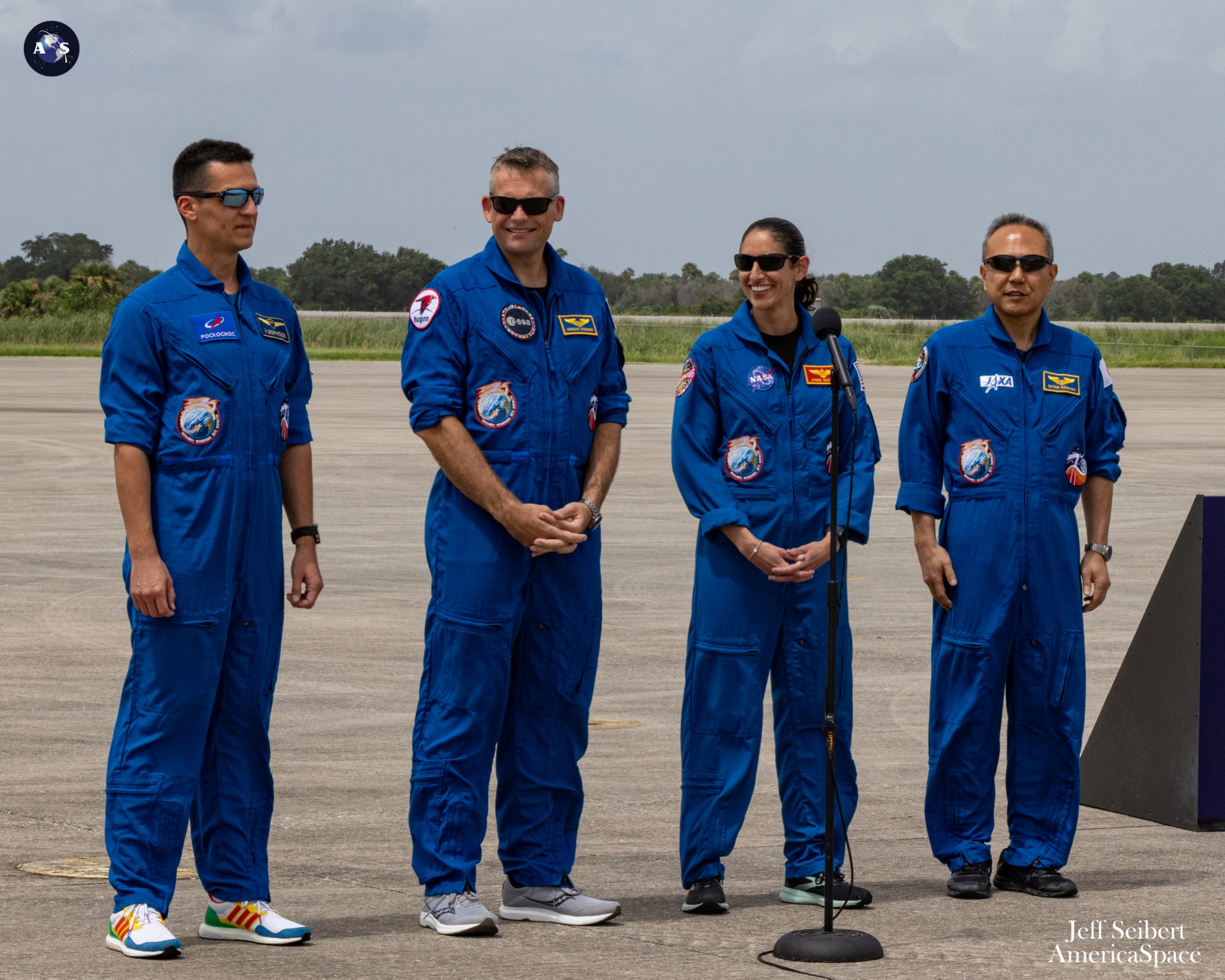
Riding the B1081 core, the fourth brand-new “single-stick” Falcon 9 to fly in 2023, Moghbeli and her crew rose atop a pillar of golden flame aboard Dragon Endurance, which is making her third trek to space and at the end of Crew-7 will set a new record, perhaps as high as 500 cumulative days, as the most flight-seasoned Crew Dragon. The current record-holder, Dragon Endeavour, is currently in orbit and when she returns to Earth late next week she will have accrued over 460 days across her four-mission career.
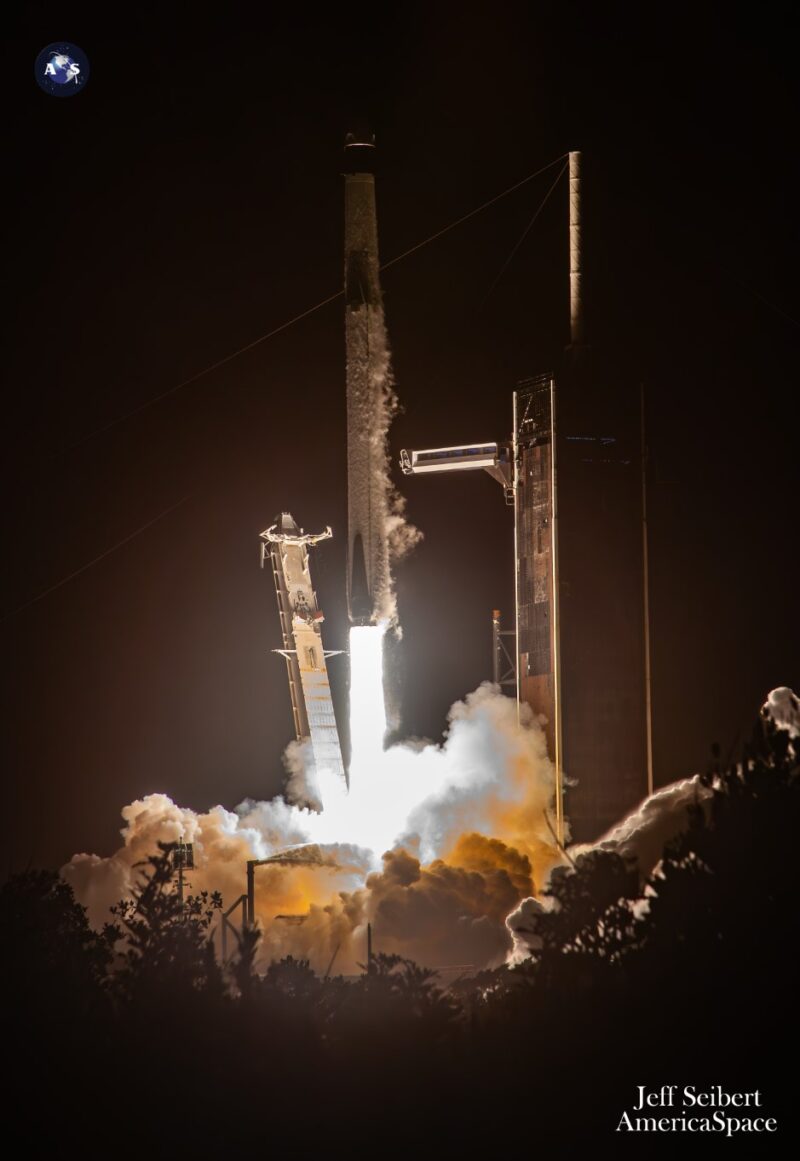
Dragon Endurance entered the Crew Dragon fleet in November 2021, when she launched Crew-3’s Raja Chari, Tom Marshburn, Kayla Barron and Matthias Maurer on their 176-day Expedition 66/67 increment to the station. According to Chari, the crew named Endurance partly in honor of Sir Ernest Shackleton’s Antarctic exploration vessel, but also as a tip of the hat to the “tenacity of human spirit” faced by the training and production workforce which labored through the COVID-19 pandemic to ready their ship for launch.
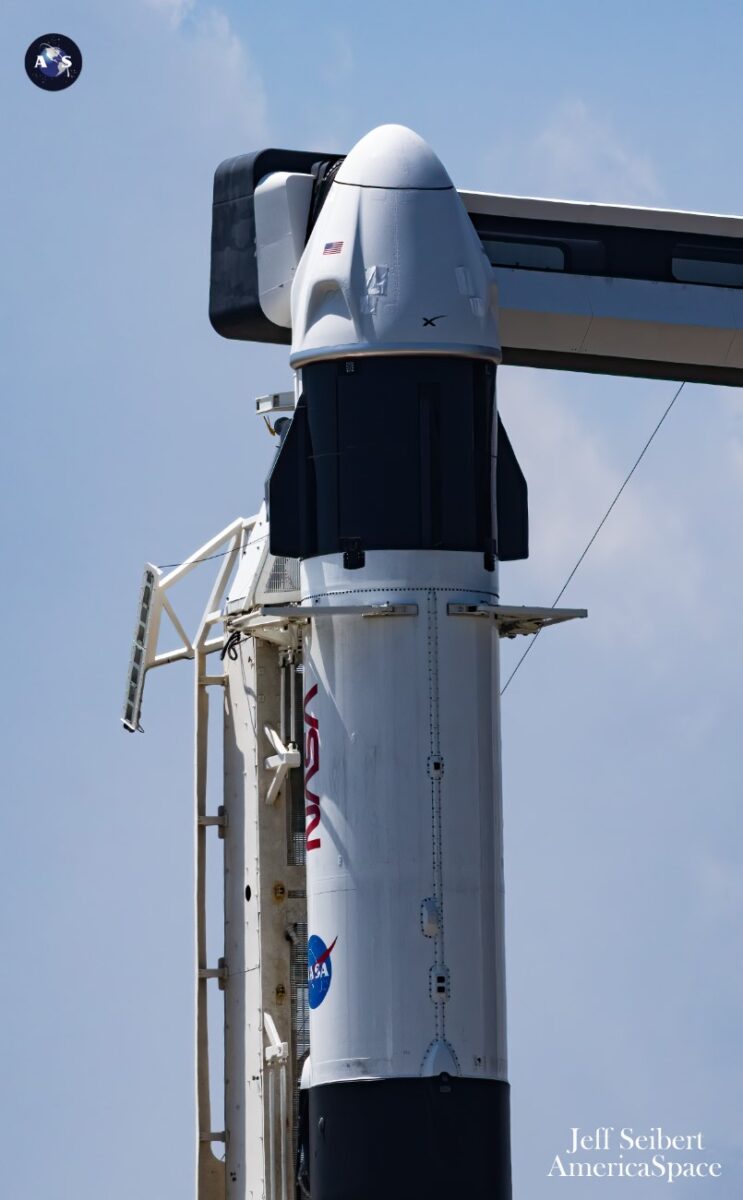
Returning to Earth in May of last year, Endurance wrapped up her first flight with more than 2,800 Earth orbits and her crew included the oldest and youngest long-duration U.S. occupants of the ISS. She was turned around rapidly to launch again last October with Crew-5, commanded by Nicole Mann, the first woman to lead a crew on her first flight, and including the first Russian cosmonaut to fly a Commercial Crew vehicle.
Following Crew-5’s return home in March, after 157 days and more than 2,500 Earth orbits, Endurance positioned herself as the second most-flown member of SpaceX’s crew-carrying fleet, with a combined 333 days, 12 hours and 40 minutes in flight. Notably, all three of her missions—led by Chari, Mann and now Moghbeli—have been commanded by first-time spaceflyers.
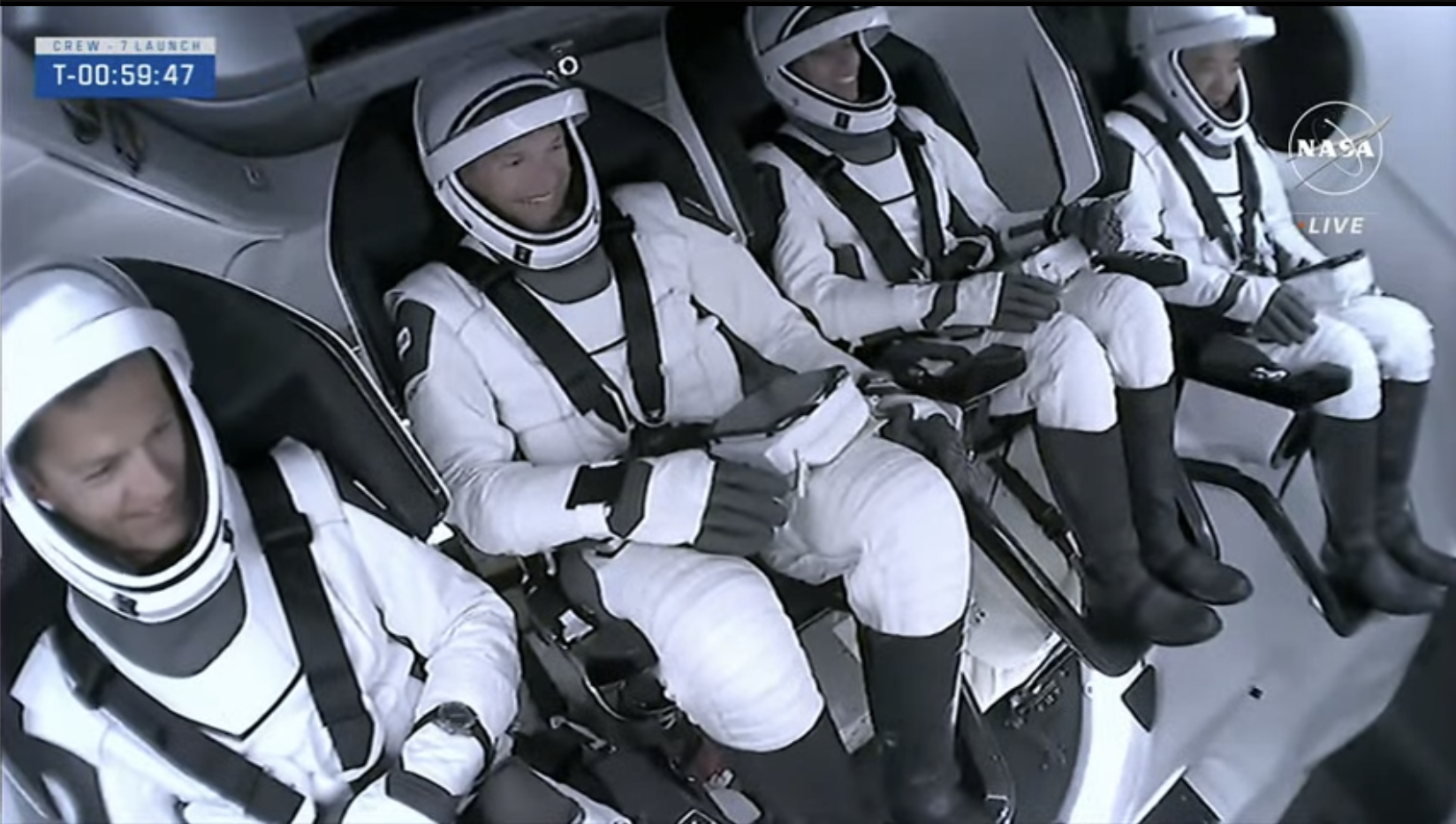
As previously noted by AmericaSpace, Crew-7 also becomes the first Commercial Crew flight to feature representatives of four sovereign nations. During their six-month ISS stay, they will be aboard for the closing weeks of the Expedition 69 increment, before Mogensen rotates into the command of Expedition 70, becoming the first Dane to helm the sprawling orbital complex.
The quartet are expected to support around 300 scientific investigations during their half-year in orbit, including 81 “new” experiments”, and will welcome or bid farewell to several crewed and uncrewed visiting vehicles. These are expected to include the departure and arrival of two Northrop Grumman Corp. Cygnus cargo ships, a pair of SpaceX Cargo Dragons and perhaps AxiomSpace, Inc.’s Ax-3 all-private crew, possibly in January.
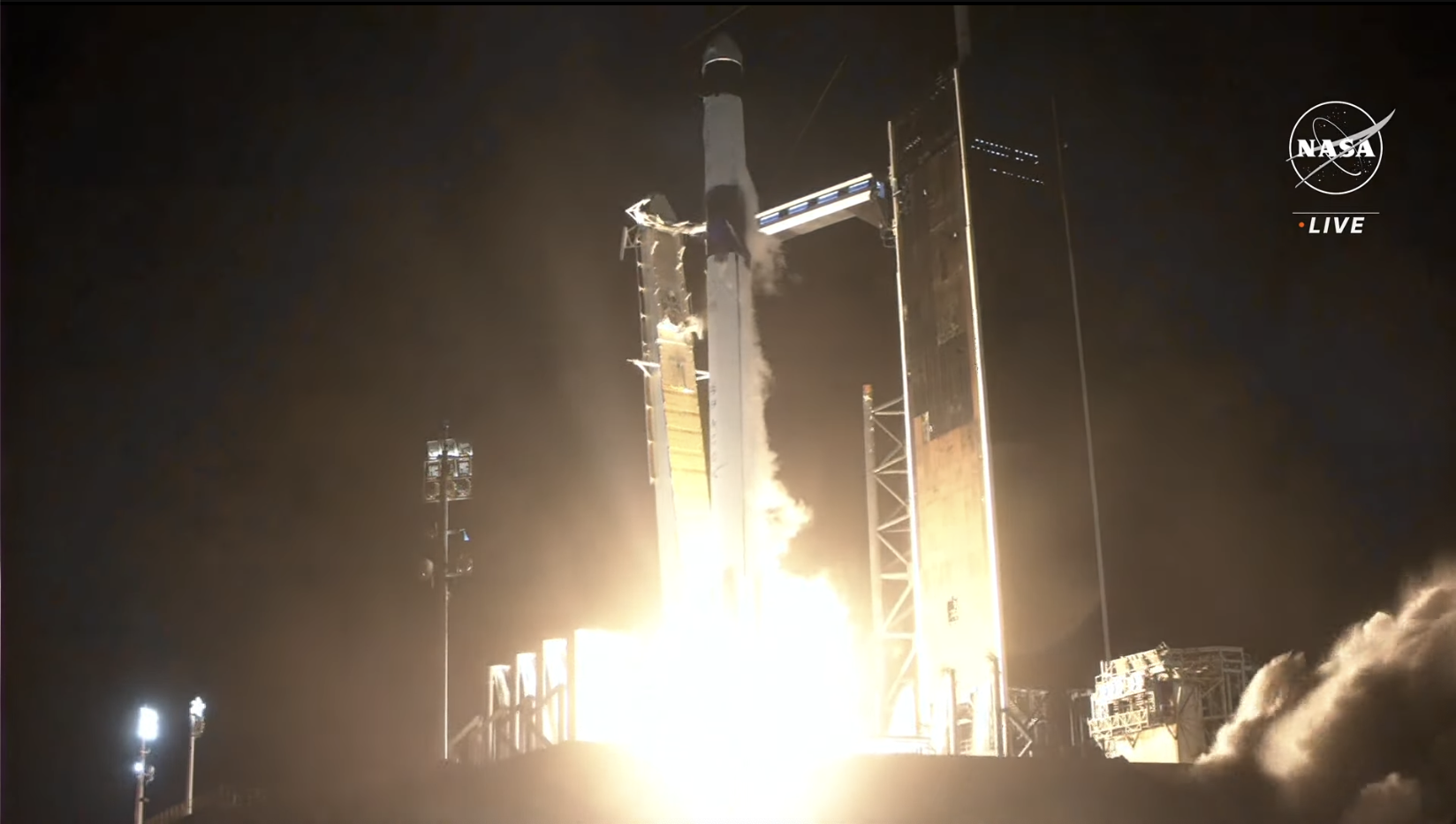
Soyuz MS-24 will also launch from Baikonur on 15 September, carrying Russian cosmonauts Oleg Kononenko and Nikolai Chub, plus NASA’s Loral O’Hara, to round out the seven-strong Expedition 70 crew. Current plans call for Kononenko and Chub to spend up to a full year in space, with O’Hara returning to Earth after six months.
Following their arrival in Florida last weekend and a successful Dry Dress Rehearsal and Static Fire Test at Pad 39A on Tuesday, teams initially focused upon launching Crew-7 at 3:49 a.m. EDT Friday. However, despite weather conditions pledging 90-percent favorability, NASA and SpaceX ultimately stood down from yesterday’s attempt after meeting Thursday to discuss the mission’s final readiness status.
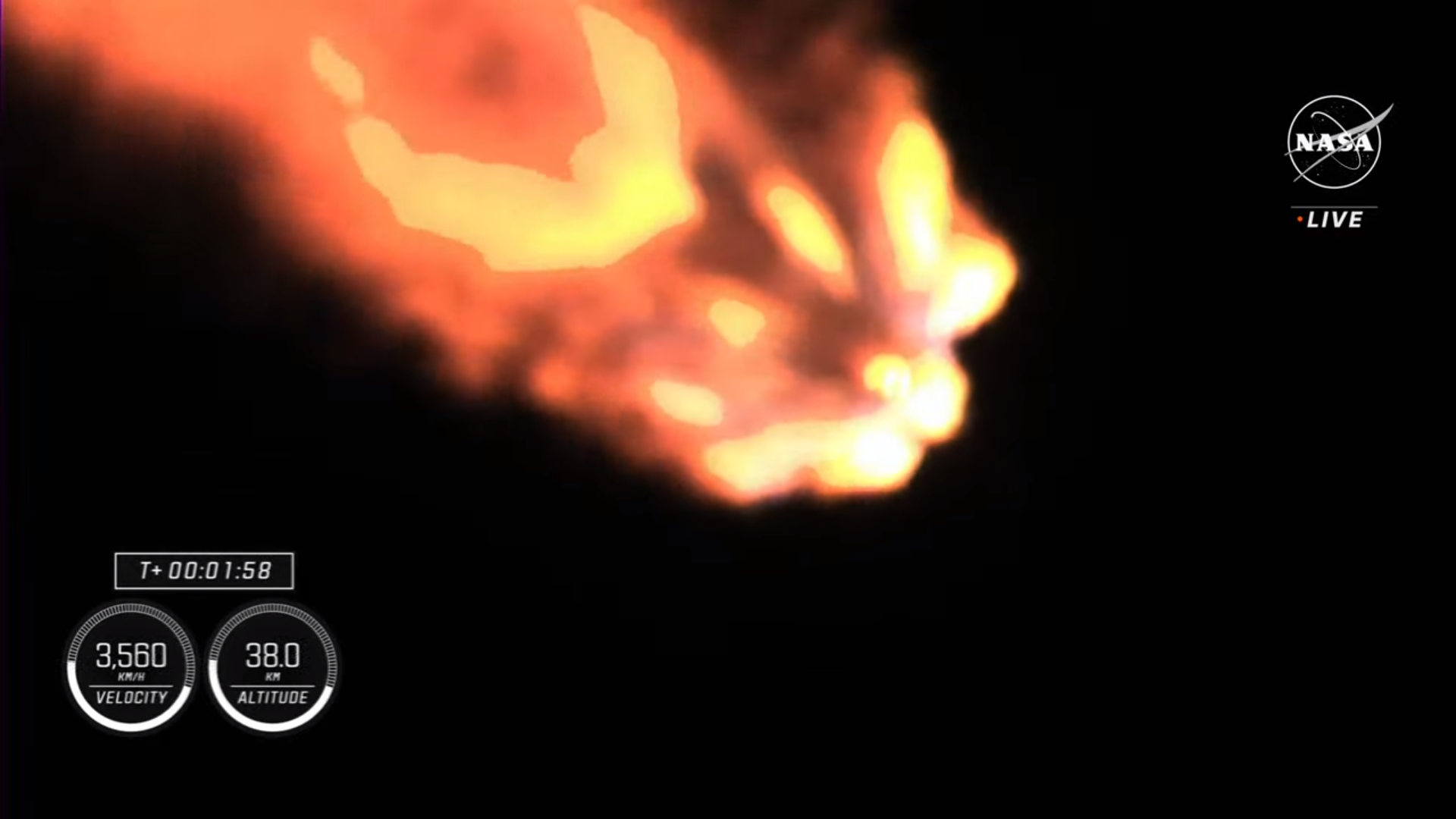
“After performing an extra data review, teams decided to take additional time to reconfirm required factors of safety and operational margin on one of the Dragon spacecraft’s Environmental Control and Life Support System (ECLSS) components,” NASA reported. “The new launch date provides teams additional time to complete the analysis and thoroughly review the necessary data ahead of launch.
“All ECLSS valves on the Crew-7 and Crew-6 Dragon spacecraft are performing normally,” it was stressed, “and performed as expected in all pre-flight testing.” Launch was correspondingly retargeted for an “instantaneous” T-0 at 3:27 a.m. EDT Saturday, the orbital insertion parameters of which would produce a slightly longer rendezvous profile of 29 hours—a Friday launch could have reached the ISS in 22 hours—ahead of docking at 8:50 a.m. EDT Sunday.
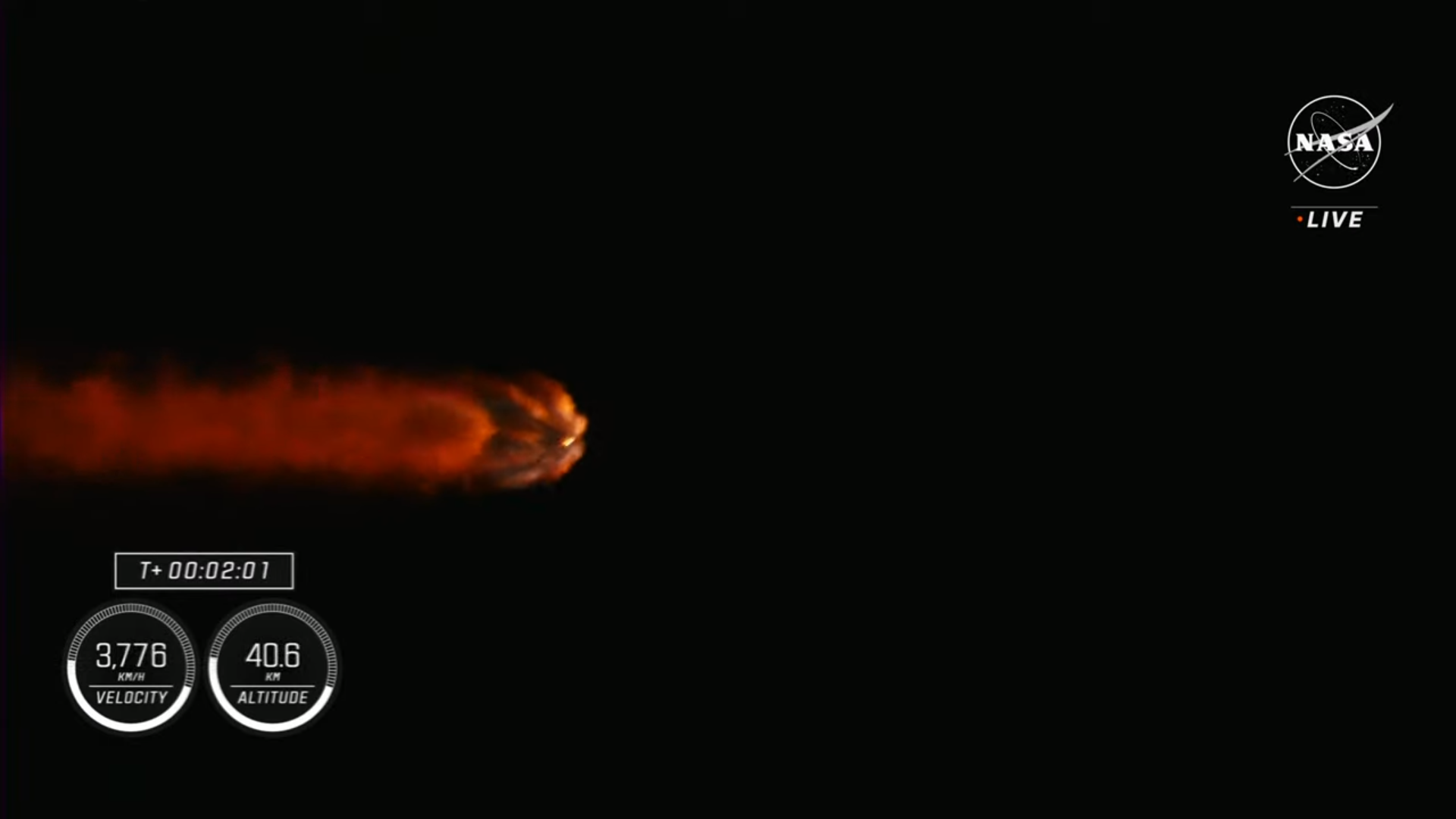
Weather conditions for Saturday’s launch, and also Sunday’s 3:04 a.m. EDT backup option, hovered around 95-percent-favorable, following the departure of a frontal boundary into South Florida yesterday. “Beyond a few passing sprinkles moving onshore, weather will be quiet overnight,” reported the 45th Weather Squadron at Patrick Space Force Base, with a possible violation of the Cumulus Cloud Rule offering the only risk of note.
Without further ado, B1081 sprang into the darkness at 3:27 a.m. EDT, powering uphill for the opening 2.5 minutes of flight, then separating and—for the second time on a crewed mission—returning to land not on the deck of an offshore Autonomous Spaceport Drone Ship (ASDS), but rather on solid ground at Landing Zone (LZ)-1 at neighboring Cape Canaveral Space Force Station. With B1081 gone, the Merlin 1D+ Vacuum engine of the Falcon 9’s upper stage ignited for six minutes to lift Dragon Endurance the rest of the way to orbit.
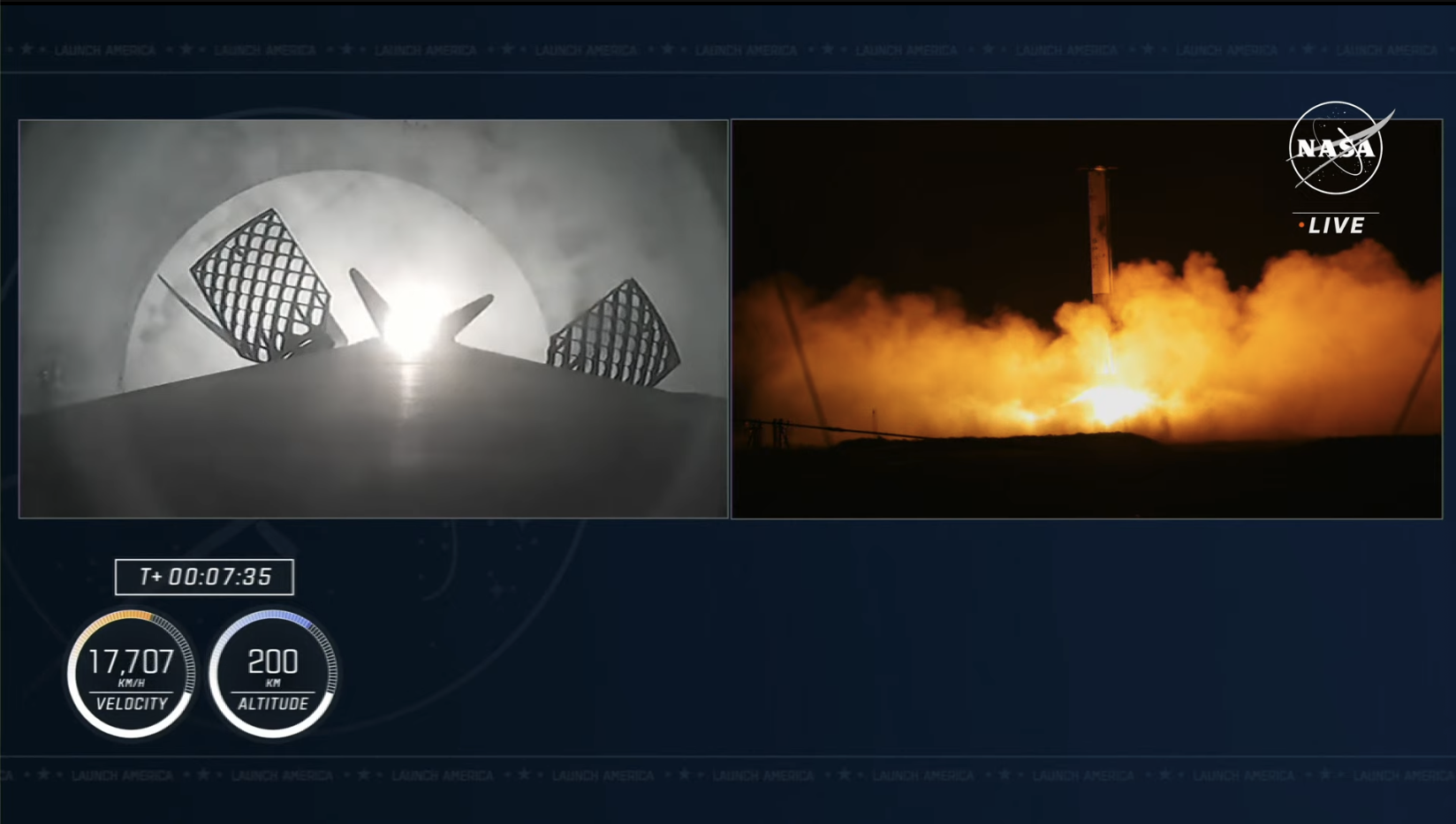
Separation of the spacecraft occurred 12 minutes into the flight, followed shortly afterwards by the deployment of its nose cone to expose rendezvous and tracking sensors. Also “deployed” was the crew’s zero-gravity indicator, a plush three-toed sloth, provided by Mogensen’s children. Moghbeli, Mogensen, Furukawa and Borisov will spend the next day-and-a-quarter in independent flight, targeting Sunday’s mid-morning docking at the space-facing (or “zenith”) port of the station’s Harmony node.
They will be welcomed aboard the complex by Expedition 69 Commander Sergei Prokopyev and his Russian crewmates Dmitri Petelin and Andrei Fedyayev, together with Sultan Al-Neyadi of the United Arab Emirates (UAE) and NASA astronauts Frank Rubio, Steve Bowen and Warren “Woody” Hoburg. After a five-day handover between the outgoing and incoming crews, Bowen, Hoburg, Al-Neyadi and Fedyayev will board their Dragon Endeavour ship late next week and return to a parachute-assisted splashdown off the Florida Coast, to wrap up more than 183 days in orbit.
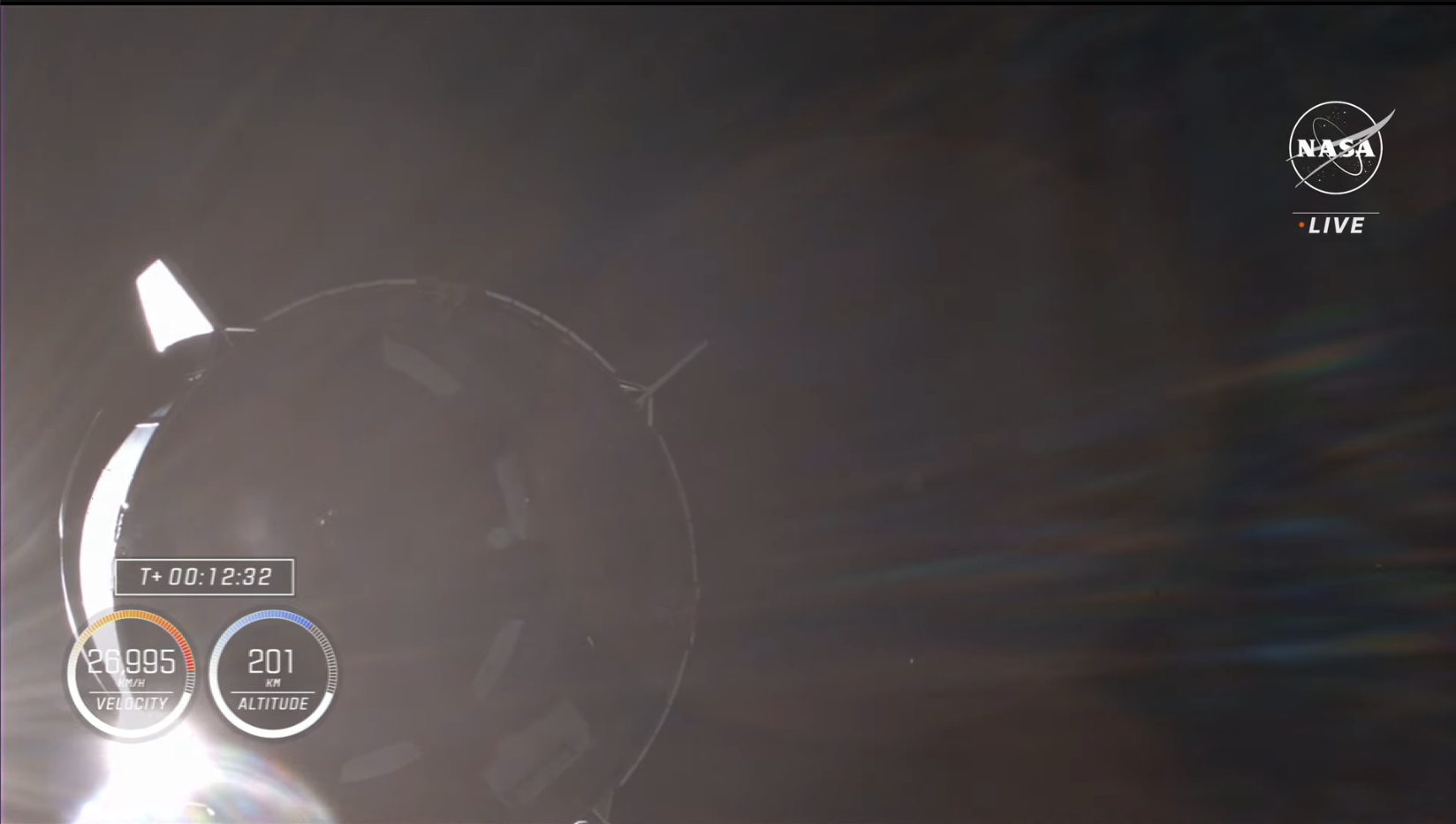
Moghbeli et. al. will then fold into the final weeks of Expedition 69, under Prokopyev’s command. His crew’s replacements—Soyuz MS-24’s Kononenko, Chub and O’Hara—will arrive in mid-September, allowing Prokopyev, Petelin and Rubio to return home aboard their Soyuz MS-23 vehicle on the 27th, completing over 370 days aloft.
That is expected to establish a new record for Rubio as the first American to log a continuous year in space. And with the departure of the last members of Expedition 69, Expedition 70 will commence under Mogensen’s command and last through February 2024.





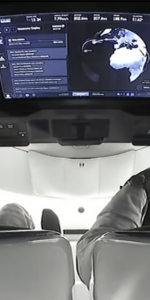
28 Comments
28 Pings & Trackbacks
Pingback:Veteran Falcon 9 Wraps Up Busy September, As Falcon Heavy Readies for Psyche Mission Static Fire Test - AmericaSpace
Pingback:SpaceX Launches Year’s 70th Falcon 9, Continues Record-Breaking Year - SPACERFIT
Pingback:SpaceX Aims for Year’s 70th Falcon 9 Launch Tonight - SPACERFIT
Pingback:SpaceX Launches Year’s 80th Mission, Space Station Cargo Flight Up Next - AmericaSpace
Pingback:CRS-29 Cargo Dragon to Ferry Science, Supplies to Head to Space Station - AmericaSpace
Pingback:Newest Falcon 9 Launches Science, Supplies to Space Station - AmericaSpace
Pingback:Newest Falcon 9 Launches Science, Supplies to Space Station – AmericaSpace – Mila News
Pingback:Newest Falcon 9 Launches Science, Supplies to Space Station - SPACERFIT
Pingback:SpaceX Launches Year’s 80th Mission, Space Station Cargo Flight Up Next - SPACERFIT
Pingback:SpaceX Flies First Mission of Weekend Triple-Header, as Starship Stands Ready to Go - AmericaSpace
Pingback:SpaceX Flies First Mission of Weekend Triple-Header, as Starship Stands Ready to Go - SPACERFIT
Pingback:Expedition 70 Crew to Enjoy Thanksgiving Dinner Aboard Space Station - SPACERFIT
Pingback:“Not of Earthly Pace”: Memories of New Years Spent in Space - AmericaSpace
Pingback:“Not of Earthly Pace”: Memories of New Years Spent in Space - SPACERFIT
Pingback:Ax-3 Crew Prepares for Ambitious Space Station Mission - AmericaSpace
Pingback:After Daylong Delay, SpaceX Targets Thursday Afternoon for Ax-3 Launch - AmericaSpace
Pingback:After Daylong Delay, SpaceX Targets Thursday Afternoon for Ax-3 Launch - SPACERFIT
Pingback:Ax-3 Launches Safely, Heads for Saturday Space Station Arrival - AmericaSpace
Pingback:Ax-3 Launches Safely, Heads for Saturday Space Station Arrival - SPACERFIT
Pingback:Ax-3 Crew Prepares for Ambitious Space Station Mission - SPACERFIT
Pingback:Northrop Grumman, SpaceX Target Monday for Next ISS Cargo Mission - AmericaSpace
Pingback:Northrop Grumman, SpaceX Target Monday for Next ISS Cargo Mission - SPACERFIT
Pingback:After Daylong Delay, NG-20 Cygnus Launches, Heads to Space Station - AmericaSpace
Pingback:After Daylong Delay, NG-20 Cygnus Launches, Heads to Space Station - SPACERFIT
Pingback:Weather 40-Percent-Favorable for Tuesday’s Launch of PACE Mission to Monitor World Ocean Health - AmericaSpace
Pingback:SpaceX Stands Down Two Missions, Targets Tonight for Vandenberg, Space Coast Launches - SPACERFIT
Pingback:SpaceX Launches Ambitious PACE Mission to Monitor Global Ocean, Atmospheric Health - AmericaSpace
Pingback:SpaceX Launches Ambitious PACE Mission to Monitor Global Ocean, Atmospheric Health - SPACERFIT